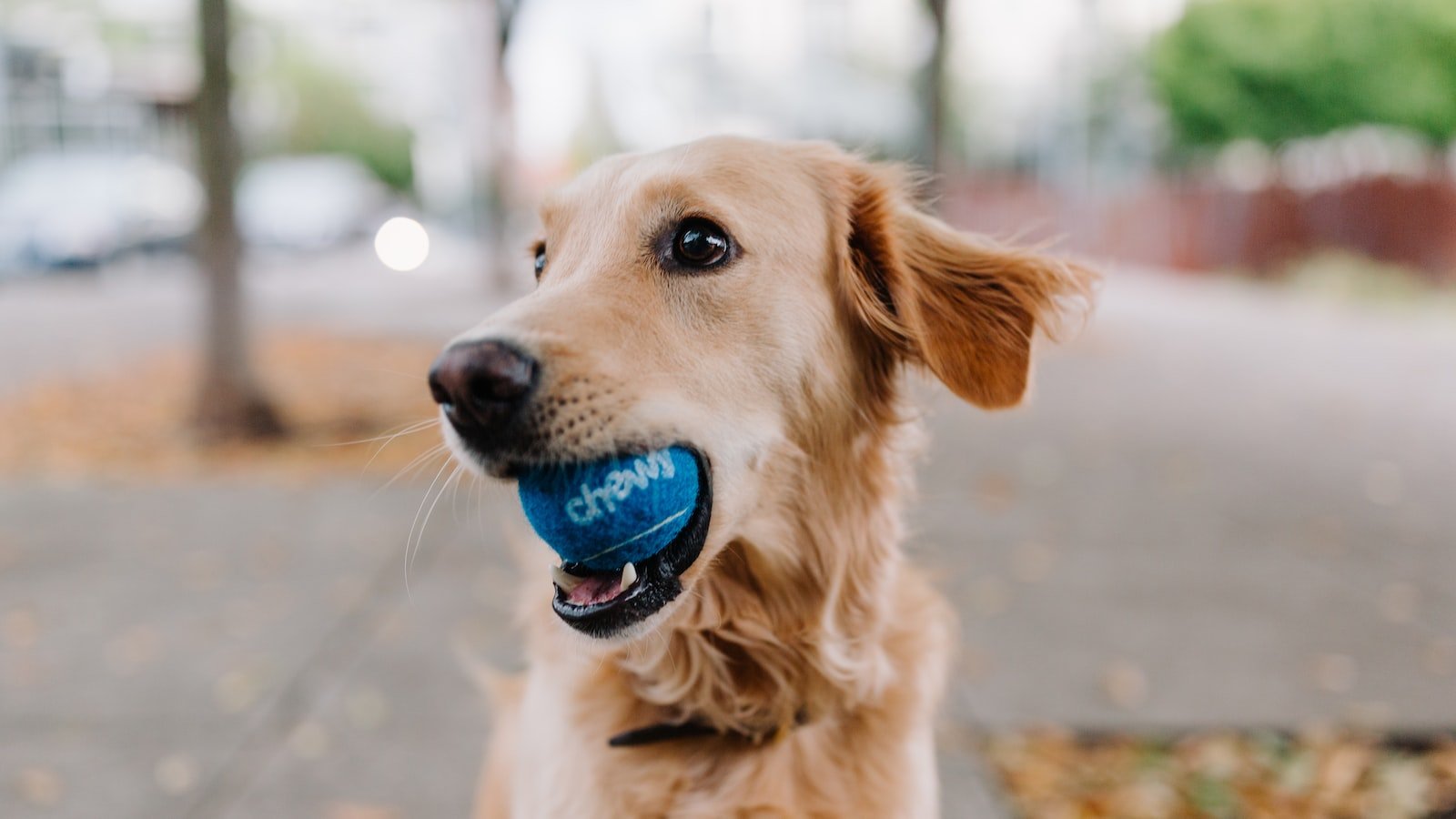Beneath the enchanting slobbery smiles and wagging tails, our canine companions harbor immense potential waiting to be unlocked. As responsible dog owners, we yearn to discover the true extent of their capabilities, to guide them towards a life of obedience and happiness. But in the vast realm of dog training, a vital question often lingers within our curious minds: how many training sessions does our beloved Fido truly need? Fear not, for within the realm of this guide, we shall reveal the secrets behind finding the perfect balance between nurturing, discipline, and the boundless depths of your pup’s unique brilliance. So, fasten your leashes, eager learners, as we embark on a journey through the intricate maze of training sessions, unveiling the key to unlocking your dog’s remarkable potential.
Table of Contents
- Setting Realistic Expectations for Dog Training
- Understanding the Importance of Consistency in Training
- Determining the Optimal Frequency of Training Sessions
- Factors to Consider when Deciding the number of Training Sessions
- Tailoring Training Sessions to Your Dog’s Individual Needs
- Q&A
- The Conclusion

Setting Realistic Expectations for Dog Training
When it comes to dog training, it’s crucial to set realistic expectations for yourself and your furry friend. While it’s natural to expect immediate results, it’s important to understand that training is a process that requires time, patience, and consistency.
Here are some key points to keep in mind to help set realistic expectations:
- Understand your dog’s individuality: Just like humans, dogs have different personalities, temperaments, and learning capacities. Some may grasp commands quickly, while others may take more time. Embrace your dog’s uniqueness and work with them at their own pace.
- Focus on small victories: Training your dog is a journey filled with small victories. Celebrate every milestone, no matter how small, as it indicates progress. This positive reinforcement will encourage both you and your furry companion to keep going.
- Consistency is key: Dogs thrive on routine and repetition. Consistency in training methods, commands, and rewards helps your dog understand what is expected of them. Be patient and practice daily, as regular training sessions will yield better results over time.
- Be prepared for setbacks: Just like humans, dogs have good and bad days. They might regress in their training or get distracted during a session. Instead of getting discouraged, accept setbacks as part of the process. Stay calm, and revisit the basics if needed.
Remember, every dog is unique, and progress varies from one to another. By setting realistic expectations, being patient, and working with your dog’s individuality, you’ll build a stronger bond and achieve long-lasting results in your training journey.

Understanding the Importance of Consistency in Training
Consistency: The Key to Effective Training
In the world of training, consistency is often underestimated but it is an essential ingredient for success. Whether you are an athlete striving for peak performance or a student trying to master a new skill, maintaining a consistent approach to your training is crucial.
Consistency breeds discipline. By committing to regular training sessions, you develop the discipline necessary to push through challenges and setbacks. It helps you build a routine and eliminate distractions, allowing you to stay focused on your goals. Without consistency, even the most well-thought-out training plan may be rendered ineffective.
Moreover, consistency builds momentum. Each training session acts as a stepping stone towards improvement. Just as drops of water can eventually carve a path through a rock, consistent effort brings about gradual progress. Each repetition, each practice, and each lesson strengthens your skills and enhances your performance.
Remember, Rome wasn’t built in a day, and neither are extraordinary skills. Consistency paves the way to excellence, making it an integral part of any successful training journey.

Determining the Optimal Frequency of Training Sessions
Factors to Consider in
When it comes to designing a training program, finding the perfect balance between frequency and rest days is crucial for optimal results. While there is no one-size-fits-all answer, several factors can guide you in determining the ideal frequency of training sessions:
- Training Goals: The frequency of training sessions may vary depending on your specific goals. If your aim is to increase strength or build muscle, you may benefit from more frequent training sessions. On the other hand, if you’re focusing on enhancing endurance, incorporating sufficient rest days between sessions is key.
- Recovery Ability: Everyone’s recovery ability differs, and it’s essential to listen to your body. Pay attention to how you feel after each training session. If you consistently feel fatigued or experience a decline in performance, it may be a sign that you need to reduce the frequency of your sessions.
- Training Intensity: The intensity of your workouts plays a significant role in determining frequency. Higher intensity sessions typically require more rest days to allow your muscles to repair and rebuild. Conversely, lower intensity workouts can be performed more frequently without compromising recovery.
By carefully considering these factors and continuously assessing your progress, you can find the perfect balance of training frequency that maximizes your performance and fosters long-term success.

Factors to Consider when Deciding the number of Training Sessions
When planning a training program, it’s crucial to determine the optimal number of sessions to ensure the effectiveness and success of the overall initiative. Several factors need to be considered during this decision-making process, as every training program is unique and requires a tailored approach. Ignoring these factors can result in too few or too many sessions, leaving participants either overwhelmed or lacking in necessary knowledge and skills.
1. Learning Objectives: Begin by clearly defining the learning objectives of the training program. Consider the complexity of the content and skills being taught, as well as the desired outcome. This will help to establish the baseline and guide the number of sessions needed to adequately cover the material.
2. Audience Capability: Understand the capabilities and prior knowledge of the target audience. Assessing their existing familiarity with the subject matter can aid in determining the number of sessions required. If the audience is already well-versed in the topic, fewer sessions may be necessary. Conversely, if the content is new or complex, additional sessions might be needed to ensure understanding and retention.
3. Resources and Time Constraints: Evaluate the available resources and time constraints when deciding the number of sessions. Consider the availability of trainers, training facilities, and any logistical limitations. Balancing the time required for each session with the overall duration of the training program is essential in providing a comprehensive learning experience.
By taking these factors into account, you can make an informed decision on the number of training sessions required. Remember, each training program is unique, and finding the right balance will ultimately lead to productive and impactful training sessions.
Tailoring Training Sessions to Your Dog’s Individual Needs
When it comes to training your furry friend, a one-size-fits-all approach simply won’t cut it. Just like humans, dogs have their own unique personalities, strengths, and weaknesses. It is crucial to tailor your training sessions to cater to your dog’s individual needs, helping them thrive and reach their full potential.
Establishing goals: Before diving into any training session, it is essential to set clear goals. Assess your dog’s behavior and determine what areas need improvement. Whether it’s basic obedience commands, house training, or socialization, identifying these specific objectives will allow you to tailor your training plan accordingly.
Creating a personalized routine: Every dog has their own learning style and preferred pace. Some dogs may respond better to shorter, more frequent training sessions, while others may benefit from longer sessions with breaks in between. Observe your dog’s energy levels and attention span to design a routine that suits them best.
- Adapt the training techniques: Just like people, dogs may respond differently to various training methods. Experiment with positive reinforcement, clicker training, or verbal cues to determine what resonates most with your pup. Flexibility in your approach will ensure that you meet your dog’s unique training needs.
- Be patient and consistent: Rome wasn’t built in a day, and neither are well-behaved dogs. Consistency is key in reinforcing training lessons, so make sure to practice in different environments and situations. Keep in mind that progress may take time, so be patient and celebrate small victories along the way.
- Monitor and adjust: Pay close attention to your dog’s reactions and progress during training sessions. Are they enthusiastic? Are they struggling? Regularly monitor their behavior and adjust your training approach as needed. Remember, tailoring your training sessions is an ongoing process that adapts to your dog’s ever-changing needs.
By , you’ll create a stronger bond and set them up for success. Embrace their uniqueness, and together, you’ll embark on an exciting journey of growth and learning.
Q&A
How Many Training Sessions Does My Dog Need? A Guide
Q: Why is training important for my dog?
A: Training is essential for your dog’s well-being as it helps them understand boundaries, improves their behavior, and fosters a strong bond with you as their owner.
Q: How often should I train my dog?
A: The frequency of training sessions depends on your dog’s age, breed, and personality. Generally, short daily sessions of 10-15 minutes are recommended to keep them engaged and prevent boredom.
Q: How many training sessions does a puppy need?
A: Puppies have shorter attention spans, so multiple short training sessions throughout the day are ideal. Aim for 3-5 sessions, each lasting about 5-10 minutes, to accommodate their limited focus and energy levels.
Q: How long do adult dogs need to be trained?
A: Adult dogs benefit from regular training to reinforce good behavior and stimulate their minds. Two to three sessions per week, each lasting 10-15 minutes, can help keep their skills sharp while fitting into your schedule.
Q: Can I train my dog too much?
A: It’s important to strike a balance when training your dog. While consistent sessions are necessary, overtraining can overwhelm them and cause burnout. Be mindful of your dog’s energy levels and adjust the frequency and duration of sessions accordingly.
Q: What should I do if my dog loses interest during training?
A: If your dog seems disinterested or distracted during training, try making the sessions shorter and more engaging. Use high-value treats, toys, or incorporate interactive games to keep their attention and make it more enjoyable for them.
Q: Should I hire a professional dog trainer?
A: Hiring a professional dog trainer can be beneficial, especially if you’re new to training or facing specific challenges. They have the expertise to tailor training techniques to your dog’s needs and provide guidance to enhance the training experience for both of you.
Q: Can I train my dog on my own?
A: Absolutely! Many dog owners successfully train their dogs without professional help. With patience, consistency, and the right resources, you can teach your dog basic commands, manners, and even more advanced tricks.
Q: How long does it take for a dog to learn a new command?
A: The time it takes for a dog to learn a new command varies from dog to dog. Some can quickly grasp new concepts in a few sessions, while others may require more practice. Stay persistent, use positive reinforcement, and celebrate small victories along the way.
Q: Are there any training tips for a stubborn dog?
A: Patience is key when dealing with a stubborn dog. Break training tasks into smaller steps, use higher-value rewards, and keep training sessions short. Consistency and positive reinforcement will eventually help overcome their stubborn behavior.
The Conclusion
As we bid farewell to our creative journey through the world of dog training, we hope you’ve gained valuable insights into the optimum number of training sessions for your beloved canine companion. Remember, this guide was prepared with a neutral tone, providing you with a comprehensive understanding to help navigate the marvelous realm of dog training.
As you embark on this adventure, trust your intuition and connect with your furry friend. Each dog is unique, just as we humans are, and their training needs may vary. Let their individuality shine through as you embark on this exciting educational voyage together.
Remember, patience is key. Rome wasn’t built in a day, and neither is a well-trained pup. Whether it takes five sessions or fifty, approach each training session with dedication and perseverance, celebrating the small victories along the way. Every wag of the tail or obedient pause is a step towards building a strong bond and a harmonious life with your four-legged companion.
While this guide has equipped you with knowledge and tools to make informed decisions, always consult a professional if needed. They are highly trained experts who can offer personalized advice tailored to your pup’s specific needs.
As the sun sets on our dog training guide, we hope it has ignited a spark within you to embark on an exciting journey filled with wagging tails, learning moments, and boundless love. May your path be lined with happy memories and strengthened bonds, as you and your furry friend embark on an adventure that will forever shape your lives.
Farewell, fellow dog enthusiasts, and may your training sessions be fruitful and rewarding. Remember, a well-trained dog is not just a reflection of their abilities, but a testament to the love and care they receive. Happy training, and may the paw-sitive vibes always be with you!
As an affiliate, my content may feature links to products I personally use and recommend. By taking action, like subscribing or making a purchase, you’ll be supporting my work and fueling my taco cravings at the same time. Win-win, right?
Want to read more? Check out our Affiliate Disclosure page.